Commercial Cooling Installation and Repair Services
Check-up and Maintenance
Get Your Questions Answered
Save on Energy Bills
The Valley Comfort Way
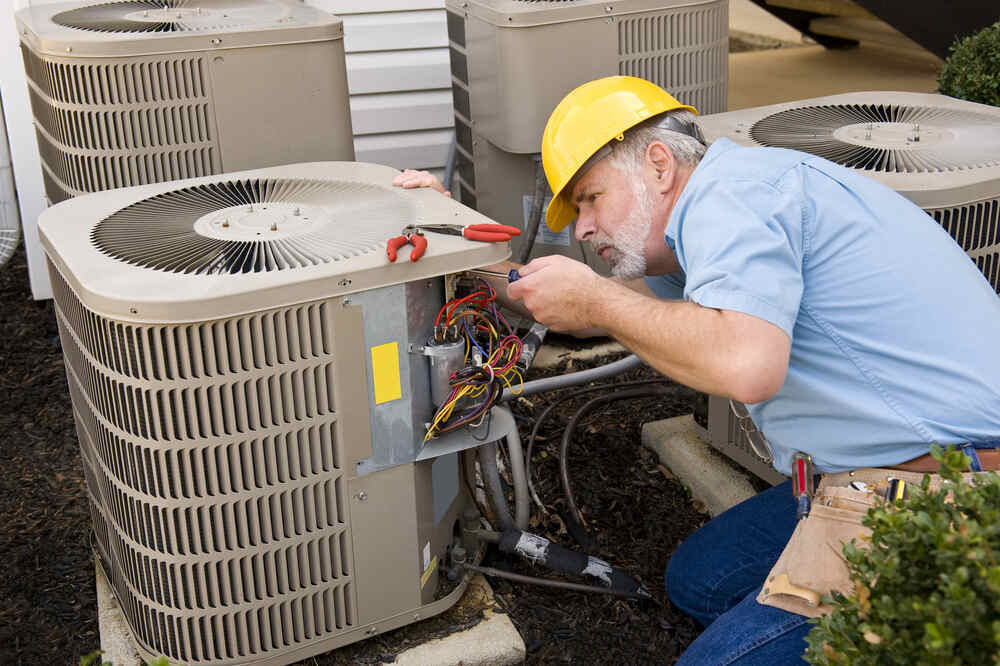
Experienced
As a family-owned business, Valley Comfort values building long-term relationships with other business owners.
We are proud to be a Diamond Certified Company!
Available
We are available 24/7 and committed to personalize your journey with us. Whether it’s customizing your maintenance plan, or immediately tending to your emergencies, we want to ensure that you receive the best service possible.
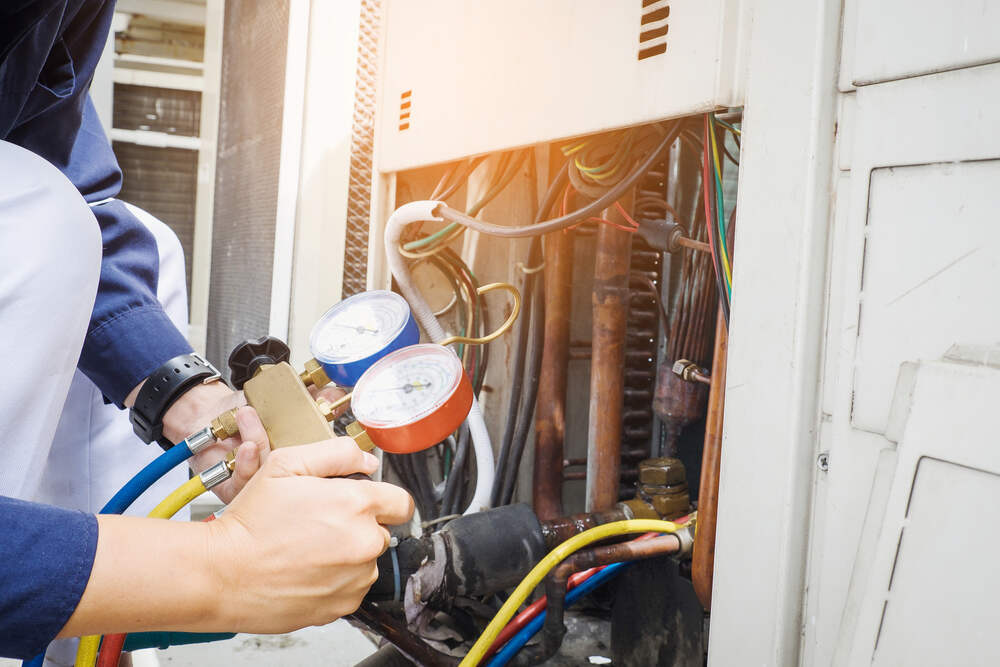
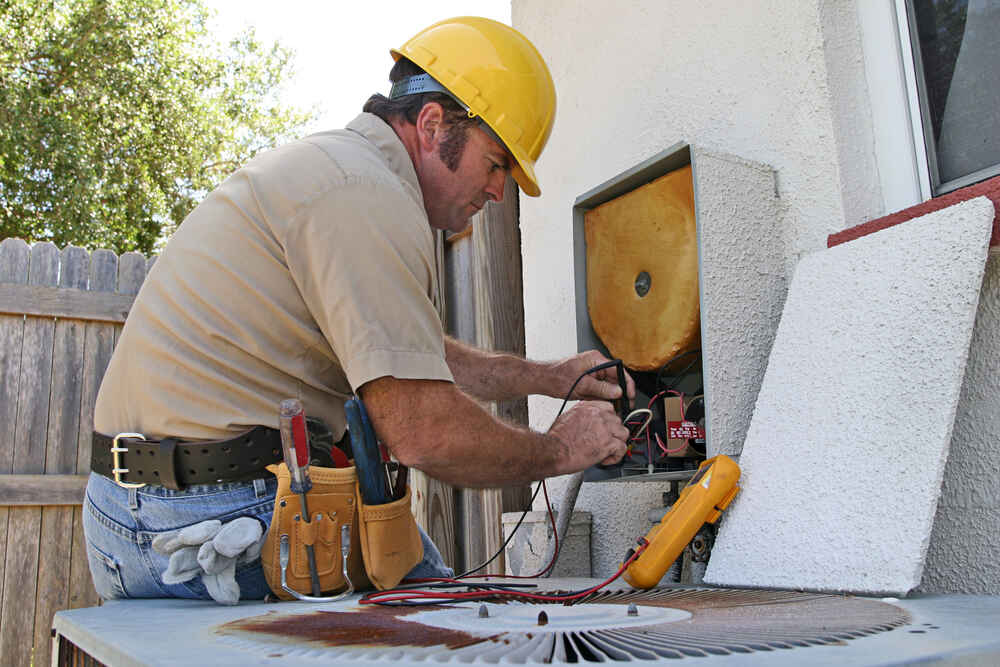
Reliable
We make the effort to understand your businesses cooling needs and respect the objectives you want to achieve.
Locations We Serve
Sonoma County
- Cotati
- Healdsburg
- Petaluma
- Rohnert Park
- Santa Rosa
- Sebastopol
- Sonoma
- Windsor
Napa County
- American Canyon
- Calistoga
- Napa
- Oakville
- Rutherford
- St Helena
- Union
- Yountville
Marin County
- Novato
- San Rafael
Everything to Know About Commercial Cooling Systems:
Having a comfortable place to work can be an easy thing to take for granted – until the air conditioner stops working and the temperature rises. From the small business office to the vast warehouse to the industrial operator and beyond, providing staff with a comfortable space is essential.
While part of the challenge often involves selecting a suitable heater for the colder months of the year, cooling is a more considerable challenge for many buildings, and the likely consumer of most of your energy budget during the warmer months of the year.
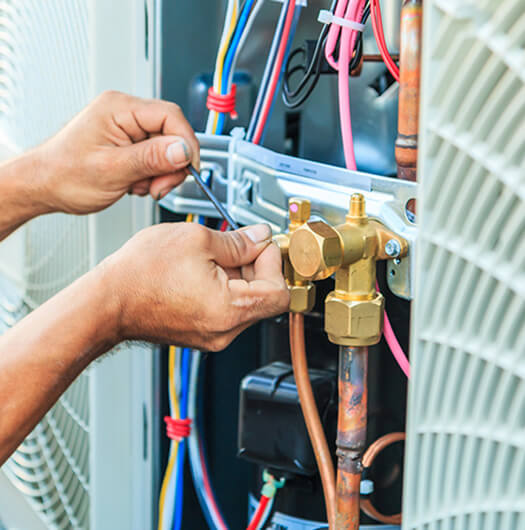
Modern commercial air conditioning systems seek to balance the need for a comfortable environment with typical business requirements for efficiency and cost-effectiveness. While your business likely already has a commercial AC unit in place, do you know what type it is, or if it’s the best solution you could use? What if you’re setting up in a new building and you need to make decisions that will yield a good return in terms of energy savings?
There are tons of options out there, and it’s natural to have many questions. Use this helpful guide as a foundation for answering your basic questions and a springboard to learning more – and ultimately to selecting the ideal commercial air conditioning units.
Table Of Contents
Types of Commercial Cooling Systems
In the century since Willis Carrier pioneered his idea for a water-based air conditioner, the technology has grown by leaps and bounds, especially with its widespread adoption following the Second World War. As a result, business owners today have no shortage of different options to choose from when it comes to the types of commercial air conditioning systems available for installation. Let’s look at each option in depth alongside the pros and cons for each.
1. Central Air
The original option and still one of the leading commercial HVAC implementations, central or “forced air” cooling may also be called a “split system.” These rely on a centralized air handler unit connected to an outdoor unit for cycling the refrigerant and dissipating heat to the outdoors. Cool air flows through ducts and cools the structure. Systems may be single-split, with only one thermal zone, or multi-split, in which multiple units link together but are controlled by different interior thermostats.
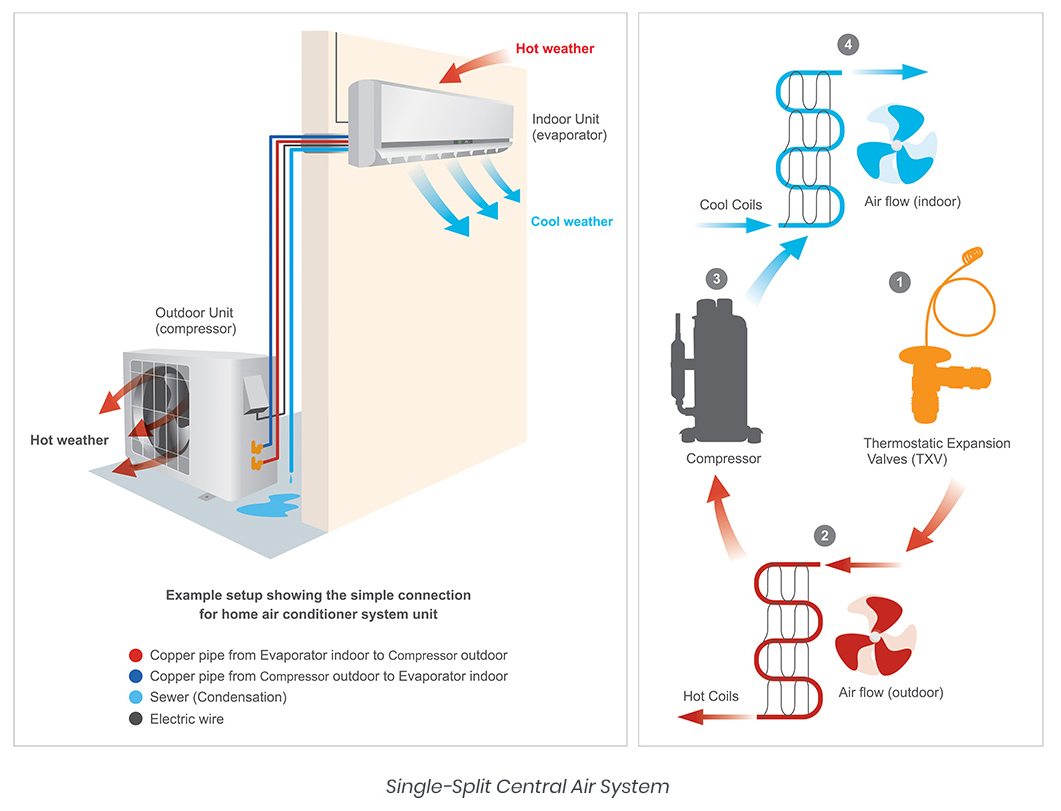
2. Ductless Mini-Split
Ductless mini-split systems use the same type of refrigeration cycle of compression and expansion that a regular central split system does but blows its cold air directly from the unit into the room without the use of a duct system. Sometimes called “room air conditioners,” they offer a variety of mounting options (such as below windows or above doors) and multiple interior units can link back to one exterior installation.
The Ductless Mini-Split System is best for those who are looking to cool one specific room.
3. Heat Pumps
Technically, heat pumps are not a cooling technology, but rather a heating one. If you see that a commercial air conditioner features a heat pump, it tells you that the unit is capable of both heating and cooling. In other words, it can reverse the refrigeration cycle to extract heat from indoors and release it outside.
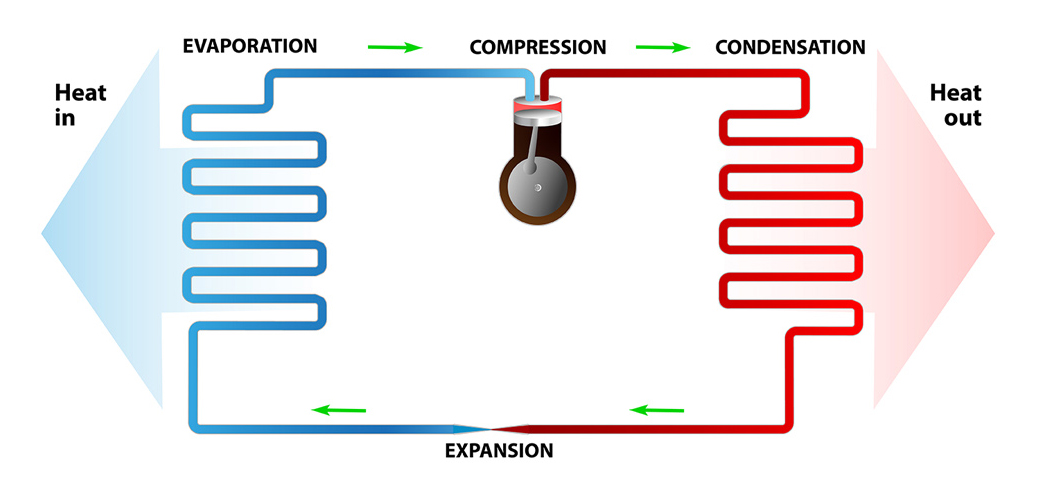
3. Heat Pumps
Technically, heat pumps are not a cooling technology, but rather a heating one. If you see that a commercial air conditioner features a heat pump, it tells you that the unit is capable of both heating and cooling. In other words, it can reverse the refrigeration cycle to extract heat from indoors and release it outside.

4. Evaporative Air Conditioners
Sometimes referred to as “swamp coolers,” these commercial AC units don’t use a refrigerant system to create cooling and are best suited for very dry regions, such as those with desert conditions. The main cooling unit includes special absorbent pads on the inside which the machine regularly soaks with water. Fans pull in hot outside air and blow it through these pads, creating cool and naturally humidified air that then blows into the building.
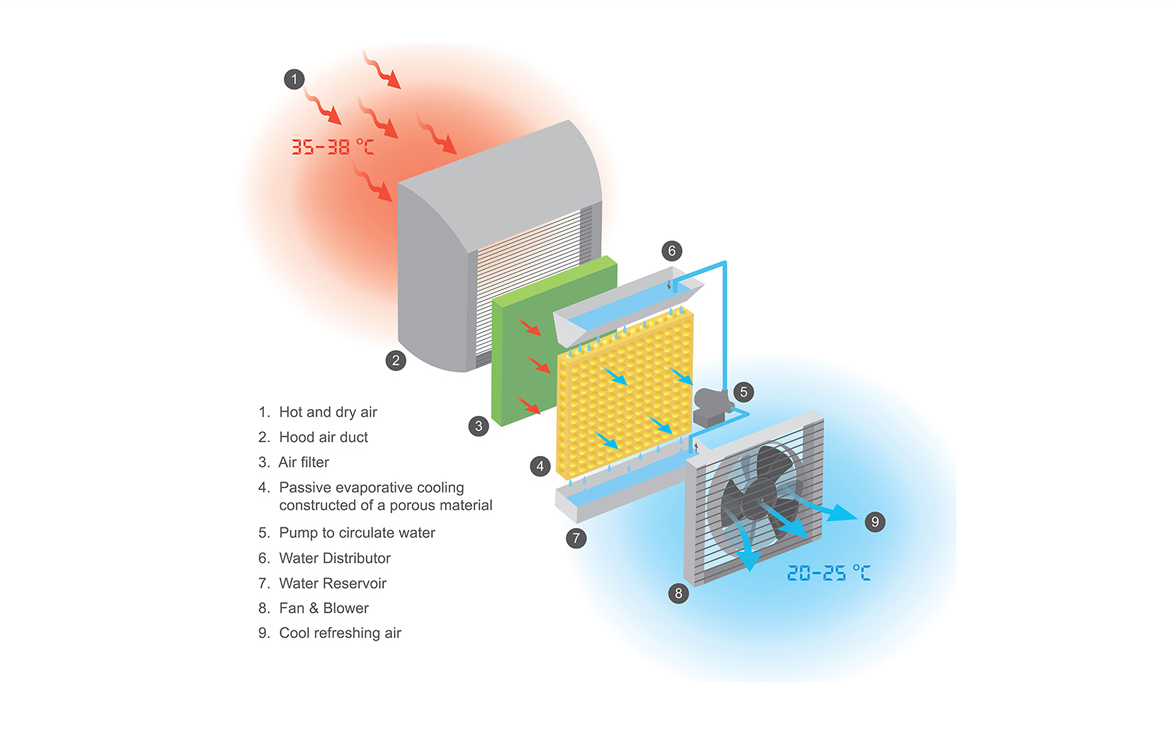
5. VRF or VRV
Standing for “variable refrigerant flow” or “volume,” these terms mean the same thing and refer to a type of mini-split ductless system that contains a heat pump. “VRV” is held under copyright by Carrier, Japanese commercial air conditioning manufacturers, so others who use similar technology call it “VRV.” Like mini-splits, VRF systems have an outdoor condenser and multiple indoor units for different cooling zones.
uses a higher setting, resulting in less energy use and better efficiency.
6. VAV or CAV
“Variable” and “constant air volume,” VAV and CAV refer to specific types of central air conditioner technology.
- Constant Air Volume: CAV is older and, today, less frequently used; it involves continually sending air into the building’s system, with the compressor operating at full power in cycles to keep the air at a constant temperature.
- Variable: VAV systems work to maintain a baseline air temperature, then modify how much air it sends to different climate zones based on cooling requirements. VAV systems have few drawbacks compared to CAV and offer bigger savings year over year.
7. Large Ceiling Fans
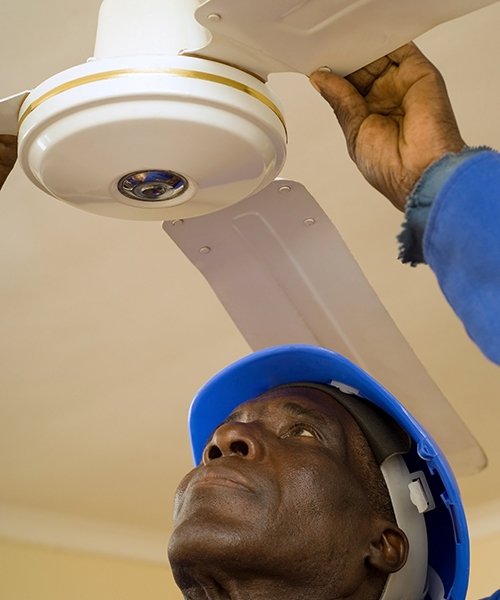
For spaces where refrigerant or evaporative cooling are not wholly effective, some business owners may opt for over-sized industrial ceiling fans. These can provide the same cooling power as dozens of standard fans and allow for circulation of air over a wide area. However, they do not offer much in the way of substantial cooling. In combination with another HVAC system, though, they can allow the thermostat to remain at a higher setting. Lower energy costs and better worker comfort. A small number of usage scenarios and potential installation challenges.
8. Industrial Box Fans
Like ceiling fans, box fans are a suitable choice for when whole-area cooling is not ideal, such as in a mechanic’s shop that is mostly open to the outdoors. Some box fans can be a part of a portable evaporative cooler for creating a more chilled stream of air.
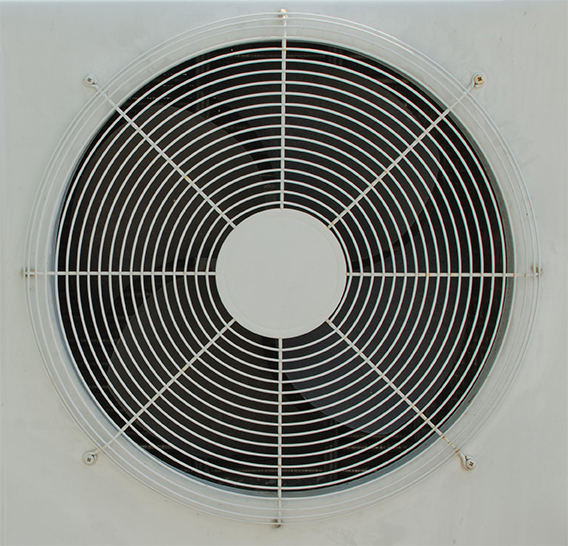
Maintenance and Service
While in an ideal scenario you won’t need to think much about your HVAC systems on a daily or even weekly basis, that doesn’t mean they offer a “set it and forget it” experience. Especially when you consider the impact your air conditioner can have on energy expenses, the need for routine commercial air conditioning maintenance becomes readily apparent. Here are the essential facts to know about servicing your units.
1. What Are the Most Common Concerns to Watch Out for in Commercial AC Units?
There are a range of issues that can crop up, but there are some types of HVAC concerns common to most systems. These include:
- overly noisy operation
- freezing or leaking pipes
- A lack of cold air
Any of these signs should merit a call for service.
2. How Can I Avoid Problematic Equipment Failures?
Stay up-to-date on regular maintenance and follow the guidelines of your commercial air conditioning repair service provider. For more information, see the FAQ section below.
3. What is the Maintenance Cost?
Annual maintenance visits are not very expensive compared to your commercial air conditioning costs should a breakdown necessitate a replacement. Service visits may run your business a few hundred dollars, while some repairs will be more or less expensive. The specifics of your system and the labor required will dictate the answer.
Make a Appointment to Create a Financial Payment Plan with Us Today
4. What Attributes Should I Look for in Commercial Air Conditioning Companies?
Dependability, experience, and flexibility – these are the three key attributes. Depend on your contractor to provide sound advice on your next moves, the experience to innovate and suggest the best solutions, and the flexibility to meet diverse levels of need. A local partner is an invaluable asset.
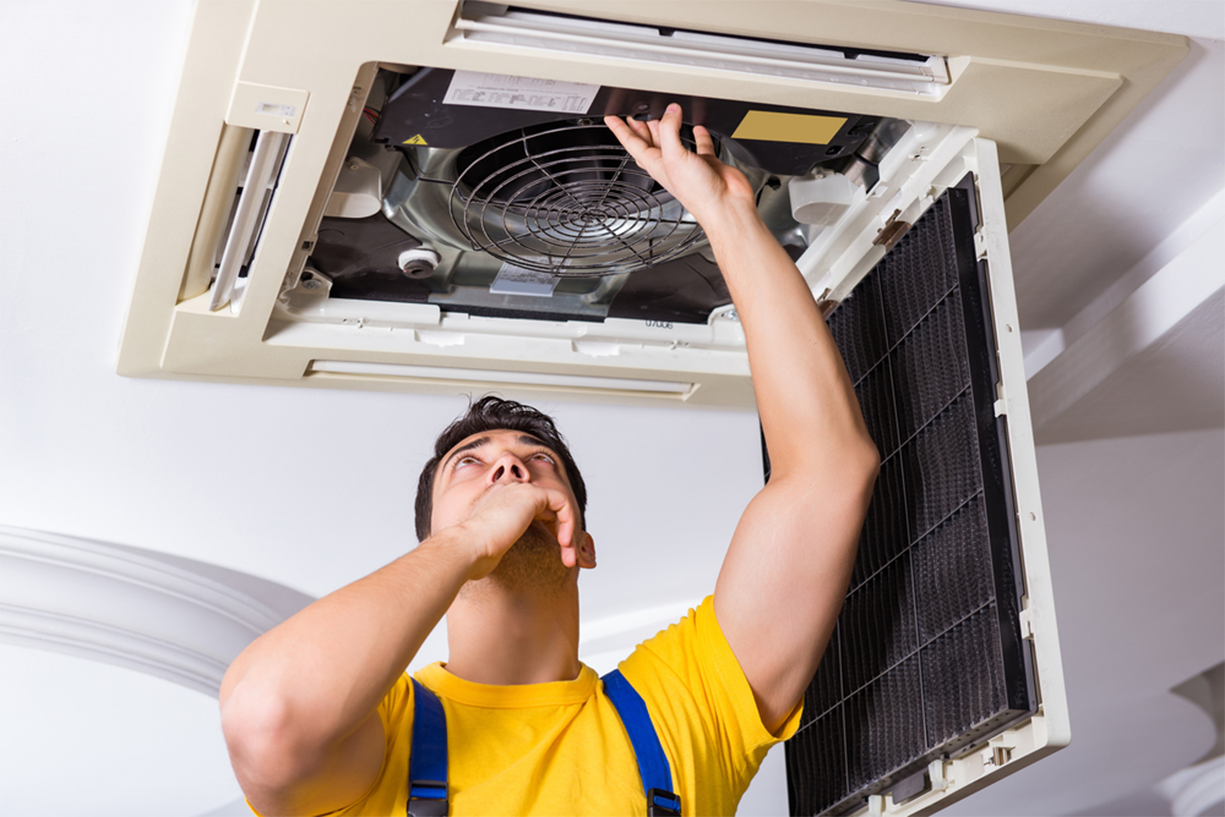
Efficient Cooling Systems
Although there are many different types of cooling systems available, the most essential feature of any one option is its ability to operate efficiently. In other words, how much energy does the system require to create and maintain the correct temperatures in your workspaces?Understanding efficiency is an essential step in both choosing the right options now and ensuring your energy costs remain under control into the future. Let’s break it down.
What is A/C Efficiency?
At its most basic, air conditioner efficiency is simply a measure out how much cooling power the unit can output compared to how much electricity it draws. These measurements use British Thermal Units (BTUs) and watts, respectively. We define the power of an air conditioner in terms of how many BTUs of heat it pulls out of the air during an hour. This number is compared to the wattage required to achieve the outcome, and the result is the efficiency.
How is Efficiency Measured?
For most AC systems, particularly central air units, efficiency is measured using a number called the SEER, or in some cases, the EER. EER is the “energy efficiency ratio,” or “seasonal” ratio in the case of SEER. EER is the raw result of dividing BTUs per hour by the unit’s wattage. The SEER averages out this performance throughout an entire cooling season. In both cases, higher SEER and EER numbers represent better efficiency. All units today come with labels that make it easy to see the efficiency ratio.
How to Maximize Efficiency?
Ensure that you have commercial central air conditioning units appropriately sized for your building, as units too large or small will not function efficiently. Ensure periodic cleaning of your ductwork, enlist the help of commercial AC contractors for regular service, and change your air filters approximately every month. Combined with a strong initial selection, this ensures good efficiency.
Learn More Information About AC Efficiency From Our Technicians.
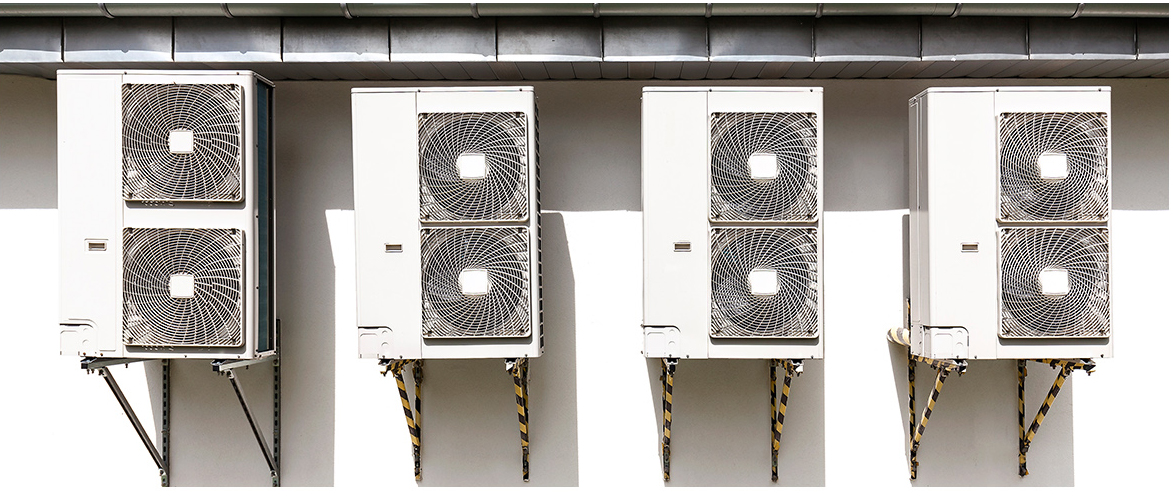
Other Factors of A/C Efficiency:
The Most Common Commercial Cooling System
What are the best commercial air conditioning units available? The answer to that question will vary depending on the business in question, but it can help to look at the systems most commonly
used by businesses.
For small businesses which occupy buildings without much interior space, the typical split-system unit remains popular. However, for larger structures and those with variable cooling requirements, package units that utilize VRF technology remain the most popular. Why?
Overview
Most contemporary buildings have access to existing ductwork since their designs factored into mind the need for comprehensive cooling solutions. Multi-story buildings especially are less likely to rely on mini-splits, though they can be an important component to a solution involving mixed methods.
Likewise, commercial properties require robust cooling capabilities and the ability to maintain temperatures at as low a cost as possible. Because VRF can achieve such reliable outcomes across temperature zones, and because it allows for heat recovery and heat pump operation, it’s a versatile choice in many climates. Non-VRF package units are also highly popular because they are often easy to place on rooftops.
Most contemporary buildings have access to existing ductwork since their designs factored into mind the need for comprehensive cooling solutions. Multi-story buildings especially are less likely to rely on mini-splits, though they can be an important component to a solution involving mixed methods.
Similar to a split-system unit, a VRF System contains have an outdoor condenser and multiple indoor units for different cooling zones. They are able to have zone-independent temperature control.
Efficiency
According to one government study, VRF systems use between 30 to 40% less energy than systems with more standard compressor types. How can VRF achieve such efficiency? It’s in the name: the precise control of refrigerant volume from unit to unit ensures that compressor motor restarts are kept to a minimum, so the system can operate for long periods in its most efficient state. These systems also ensure that cooling continues even when one or more indoor units experience a failure, minimizing downtime and additional energy costs. Over the lifetime of the unit’s operational capabilities, this efficiency translates into real energy savings and a positive ROI.
VRF Systems Use Between 30 to 40% Less Energy Than Systems With More Standard Compressor Types!
Cooling System Placement Considerations
Making a selection may be one of the hardest parts of the commercial air conditioning installation, but there’s still the “installation” part to work through as well. While the type of system you select matters, its operating location does too. Should you put it on the roof, on the ground, or inside the building? Answering the question of placement requires looking at the following considerations.
Cooling System
Placement Considerations
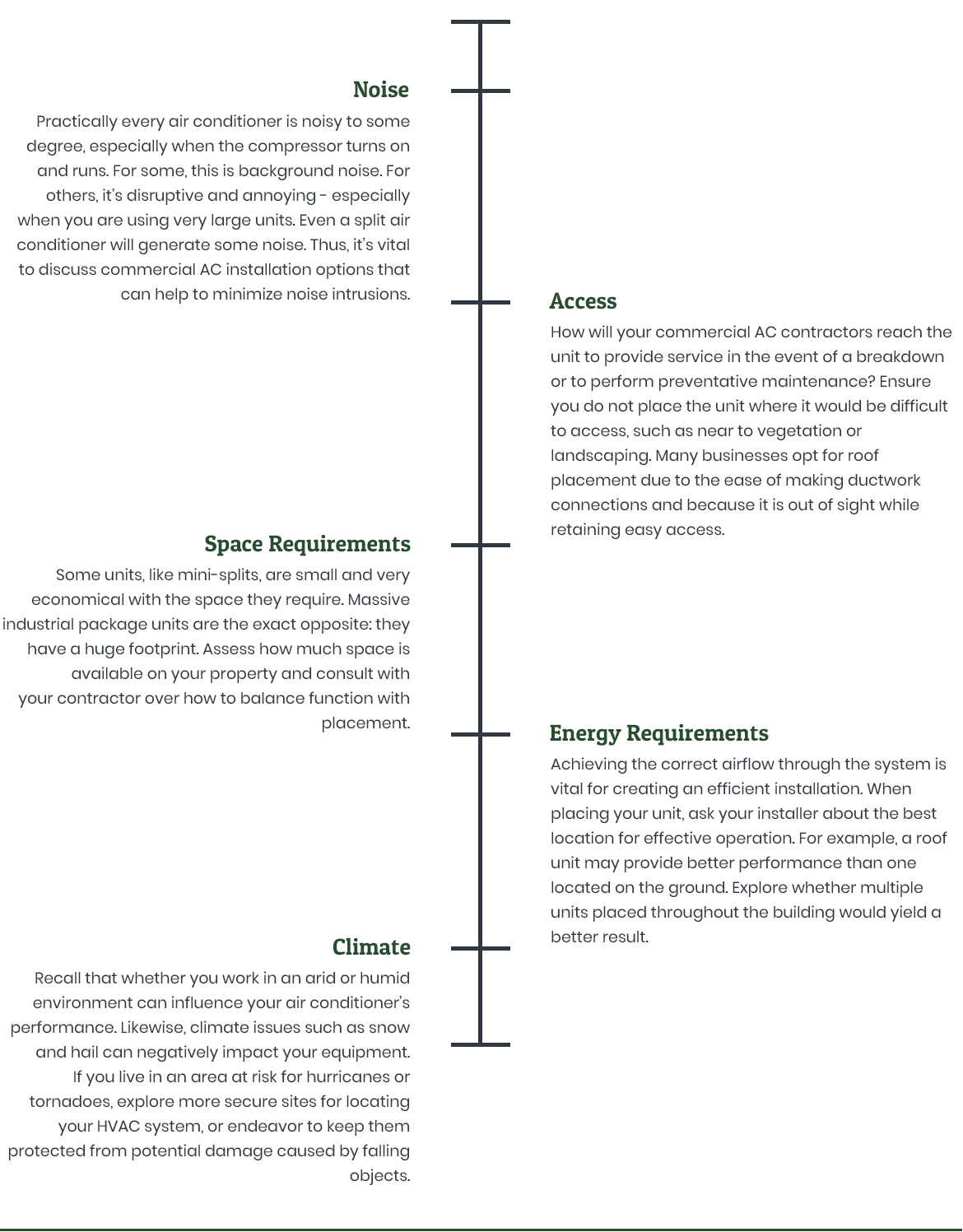
History of Indoor cooling
While practically all of us grew up with the thermostat and cool, comfortable air within easy reach, it wasn’t always that way.
Modern mechanical air conditioning is barely 100 years old, with nearly all previous efforts using evaporative cooling and other highly inefficient methods.
While the ancients had many methods for staying cool, including the ancient Chinese who relied on mechanical fans, we must trek all the way up to the 19th century before we begin seeing the groundwork for what eventually became the commercial HVAC options we know today.
Early 1800s
It might not surprise you to learn that one of the key inspirations for air conditioning technology arose in as hot and humid a place as Florida.
A doctor named John Gorrie wondered how to keep his hospital patients comfortable when he could not employ his usual method – allowing large blocks of natural ice to melt and evaporate, cooling nearby patients.
Ultimately, he arrived at a technique for artificially creating ice using a basic type of compressor. Although Gorrie’s invention was not widely embraced, it laid an important foundation and allowed others to iterate on his discoveries.
The Hot and Humid Florida Climate was a Key Inspiration for the Development of Air Conditioner Technology.
Late 1800s
By the late 1800s, development in the parallel field of electricity was advancing at a rapid pace. By 1888, Nikola Tesla and others had developed functional motors using alternating current or AC. AC motors allowed another piece of the air conditioning puzzle to fall into place, as electrically controlled fans could be turned on and off at will – ultimately, oscillating electric fans would become a crucial component of air conditioners.
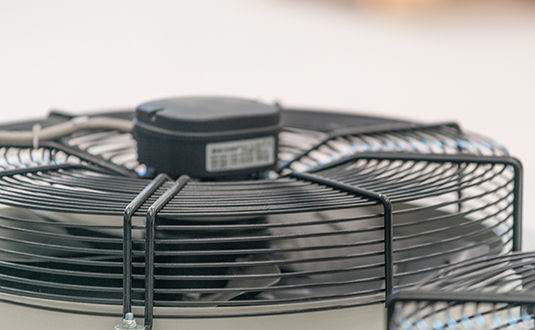
Oscillating electric fans have continued to be a main component to air conditioning.
Early 1900s
At the turn of the 20th century, a man named Willis Carrier revolutionized everything by developing the first system for controlling humidity within a building through the use of cooling coils and evaporation. Continuing his research, Carrier soon embraced the idea that air conditioning on a large scale was possible, and he innovated what we recognize as forced air cooling.
By the 1920s, ducting systems similar to modern installations became more commonplace to channel conditioned air to specific desired locations, and thus the concept of central cooling was born. Check Out Our to Learn More About Willis Carrier’s Achievements
Check Out Our Residential AC Page to Learn More About Willis Carrier’s Achievements
Late 1900s
It would be decades before air conditioners became commonplace in homes, so it is fair to say that the commercial air conditioning unit was the original innovation in HVAC. By the 1960s, central cooling systems were commonplace not only in homes but even in many of the tallest buildings. Though the basic principles of operation remain the same, future innovations for reducing energy consumption and improving cooling abilities are on the horizon.

FAQs
Are High-Efficiency Systems Worth the Extra Investment?
Yes. It is a fact that units with higher efficiency ratings can come with correspondingly higher price tags; they may feature more advanced technologies, and can exceed Energy Star rating criteria. Over the lifespan of the unit, the low annual energy costs these units yield will more than pay for the difference in unit price. A thorough analysis with your HVAC contractor can ensure you achieve a net positive return on your investment.
How Long Should My Commercial HVAC System Last?
Estimates vary, with some lifespans on the lower end of the scale falling around 12 years. However, according to the Department of Energy, the typical air conditioner lasts from 15 to 20 years. With an appropriately sized air conditioner for a commercial building and routine maintenance, you shouldn’t need to think about another replacement for quite some time.
How Often Should Air Filters Be Changed?
According to the EPA, filters should receive a visual inspection at least once a month, with replacement occurring if the filter is very dirty. The EPA further recommends not relying on the same filter for more than three months at a time. During hot times of the year when you will use the AC system almost continuously, monthly changes are ideal.
How Often Should Preventative Maintenance Be Performed?
In the absence of any developing concerns or clear problems, an annual service visit from your preferred commercial air conditioning contractors should typically prove sufficient to mitigating developing problems and ensuring your system runs at peak efficiency. Most contractors and some clients prefer to schedule this service for the spring, prior to the beginning of the highest seasonal usage. For large and complex systems or buildings with special requirements (e.g., nursing home complexes), biannual service visits may be the better option.
What Do All Those Air Conditioner and Heat Pump Ratings Mean?
“SEER” and “EER” are everywhere when you try to read about commercial heating and air conditioning, but understanding what they mean can prove elusive. Ultimately, though, it’s simple: these are just measurements of how well the unit performs under certain conditions. “EER” gives you an idea of how efficient the unit is on any given hot day. SEER averages out performance over an entire season and is usually regarded as the more important number. Your cooling professional can help you decode the numbers most meaningful for your business.
How does LEED work?
LEED, or Leadership in Energy and Environmental Design, is a points-based certification method for buildings which showcases decisions made to improve the efficiency and lower the environmental impact of a structure. Though typically focused on new projects, LEED certifications are available for existing buildings, including those undergoing renovation works. LEED certifications showcase the implementation of measures designed to make the building not only more efficient but more cost-effective to operate. If you’re interested in exploring getting LEED certified, ask for a professional assessment.
Can the Wrong Sized HVAC System Cause Problems in My Commercial Building?
Yes. In fact, based on a study by the Consortium of Energy Efficiency, more than a quarter of roof-mounted commercial HVAC units are too large for the building they supply. Whether too large or too small, any deviation in proper sizing can lead to inefficient operation, poor quality cooling, and long-term wear and tear on the unit. As a result, it’s vital to undertake a thorough determination of what unit size is most appropriate.
Valley Comfort Commercial Cooling
Valley Comfort Heating and Air, a family-owned and operated commercial air conditioning and heating supplier and installer, delivers state of the art service for businesses of all sizes. No matter the type of industrial or commercial air conditioner you require, we can provide valuable assistance in assessing needs, designing systems, and implementing them for cost-effective outcomes.
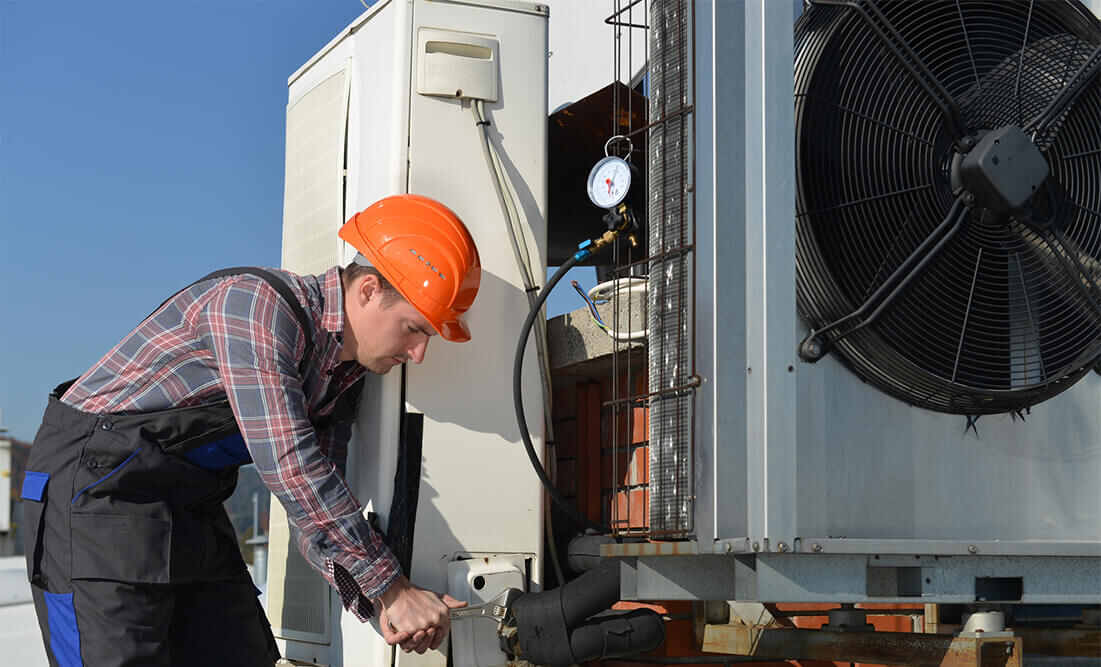
At Valley Comfort, we always put our customer's first, treating their cooling systems with professional experience and care.
Connect With us by Completing the Form Below
Request a Consultation
Please complete this form:
We serve Residential and Commercial customers in the following counties and cities
Sonoma County
- Cotati
- Healdsburg
- Petaluma
- Rohnert Park
- Santa Rosa
- Sebastopol
- Sonoma
- Windsor
Napa County
- American Canyon
- Calistoga
- Napa
- Oakville
- Rutherford
- St Helena
- Union
- Yountville
Marin County
- Novato
- San Rafael
